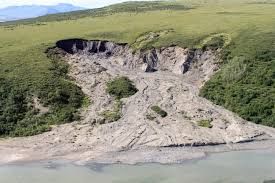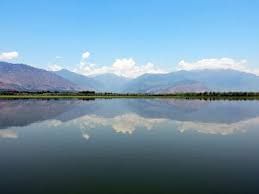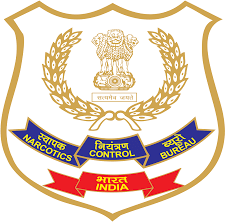UPSC Daily Current Affairs: 26 August 2024 | Current Affairs & Hindu Analysis: Daily, Weekly & Monthly PDF Download
GS3/Environment
What is Mass Wasting?
Source: The Hindu

Why in News?
A new study on the high frequency of mass wasting events in the Sedongpu Gully of the Tibetan Plateau since 2017 and the rapid warming of the area, could be bad signs for India, specifically the country’s Northeast.
About Mass Wasting:
- Mass wasting refers to the movement of rock and soil downhill due to the force of gravity.
Causes
- This phenomenon occurs when a slope becomes too steep to remain stable given the existing materials and conditions.
- Slope stability is influenced by two main factors: the angle of the slope and the shear strength of the materials accumulated.
- Mass-wasting events are triggered by various changes that increase slope angles and weaken stability, including:
- Rapid snowmelt
- Intense rainfall
- Earthquake shaking
- Volcanic eruptions
- Storm waves
- Stream erosion
- Human activities
- Excessive precipitation is the most prevalent trigger for these events.
Classification
- Mass wasting is categorized by the type of movement and the materials involved, and they often exhibit similar surface features.
- The most common types of mass-wasting events include:
- Rockfalls
- Slides
- Flows
- Creep
- In geological terms, a landslide is a general term that encompasses mass wasting involving rapidly moving geological material.
Movement Characteristics
- Typically, loose materials along with overlying soils are the ones that shift during a mass-wasting event.
- Movements can involve blocks of bedrock, which are referred to as:
- Rock topples
- Rock slides
- Rock falls
- Movements can also occur in the form of flows, which involve predominantly liquid materials.
- Mass wasting can either be a slow or rapid process, with rapid movements posing significant dangers, particularly in the case of debris flows.
Source:
- Frequent mass wasting in Tibet a cause for worry in India
GS2/Governance
What is the Unified Pension Scheme?
Source: The Hindu

Why in News?
The Cabinet recently approved the Unified Pension Scheme (UPS) benefiting 23 lakh central government employees.
About Unified Pension Scheme (UPS):
- Implementation Date: Effective from April 1, 2025.
- Eligibility: Applicable to central government employees with a minimum of 10 years of service.
- Assured Pension:
- 50% of the average basic pay over the last 12 months prior to retirement for employees with 25 or more years of service.
- Proportionate pension benefits for those with 10 to 25 years of service.
- Assured Minimum Pension: ₹10,000 per month for employees with at least 10 years of service.
- Assured Family Pension: 60% of the pension that the employee was receiving before their death.
- Inflation Protection:
- Pensions will be indexed to inflation.
- Dearness Relief (DR) based on the All India Consumer Price Index for Industrial Workers (AICPI-IW).
- Government Contribution:
- 18.5% of basic pay and DA, an increase from the previous 14% under the National Pension System (NPS).
- Employee Contribution:
- 10% of basic pay and DA, consistent with the NPS.
- Lump Sum Payment on Superannuation:
- One-tenth of the last drawn monthly pay (including DA) for every 6 months of completed service, in addition to gratuity.
- Option to Choose:
- Employees can opt between UPS and NPS starting from the upcoming financial year; once chosen, the decision is irrevocable.
- Beneficiaries:
- Initially benefits 23 lakh central government employees.
- The scheme may extend to 90 lakh employees if adopted by state governments.
- Difference from NPS:
- Unlike the market-dependent NPS, UPS guarantees a pension amount, provides a minimum pension, increases the government contribution, offers a fixed family pension, and includes a lump sum payment at superannuation.
Significance of the UPS
- Financial Security:
- Guarantees a pension and family pension, ensuring a stable income post-retirement.
- Minimum Pension:
- Guarantees a minimum of ₹10,000 per month for retirees, aiding lower-income employees.
- Inflation Protection:
- Indexes pensions to inflation, helping maintain purchasing power over time.
- Increased Benefits:
- Raises the government contribution to 18.5%, thereby enhancing employee retirement benefits.
- Flexibility:
- Allows employees to choose between UPS and NPS based on their financial needs.
- Family Support:
- Provides 60% of the pension to the spouse in the event of the employee's death.
- Employee Welfare:
- Aligns with government objectives to enhance employee welfare and improve quality of post-retirement life.
PYQ:
[2017] Who among the following can join the National Pension System (NPS)?
(a) Resident Indian citizens only.
(b) Persons of age from 21 to 55 only.
(c) All State Government employees joining the services after the date of notification by the respective State Governments.
(d) All Central Government employees including those of Armed Forces joining the services on or after 1st April, 2004.
GS2/Governance
Polygraph Test
Source: Hindustan Times

Why in News?
Recently, the Central Bureau of Investigation (CBI) conducted a polygraph test on the main suspect in the R G Kar Medical College and Hospital case.
About Polygraph test:
- The polygraph test is based on the idea that physiological responses associated with lying differ from those during truthful responses.
- During the test, devices like cardio-cuffs or sensitive electrodes are attached to the suspect to monitor various physiological indicators such as:
- Blood pressure
- Pulse rate
- Respiration
- Sweat gland activity
- Blood flow
- As questions are asked, these instruments measure the suspect's physiological reactions.
- Responses are then assigned numerical values to assess if the individual is being truthful, deceptive, or uncertain.
Evaluation:
- Each physiological response is analyzed to determine the truthfulness of the suspect.
Supreme Court Judgements:
- According to the Supreme Court ruling in Selvi & Ors vs State of Karnataka & Anr (2010), polygraph tests can only be conducted with the consent of the accused.
- This consent must be informed, allowing the accused to consult legal counsel and receive a comprehensive explanation of the test's:
- Physical implications
- Emotional implications
- Legal implications
- The guidelines set by the National Human Rights Commission for polygraph tests, issued in 2000, are mandatory.
- The consent of the accused should be documented before a Judicial Magistrate.
- Any evidence or information gathered from a voluntarily consented polygraph test can be used in court.
GS3/Economy
What is Alpkarakush kyrgyzicus?
Source: BBC

Why in News?
A new dinosaur species named Alpkarakush kyrgyzicus has been recently discovered, which walked the region of Kyrgyzstan in Central Asia around 165 million years ago.
About Alpkarakush kyrgyzicus:
- Alpkarakush kyrgyzicus is a newly identified species of large theropod dinosaur.
- This dinosaur was found in the Middle Jurassic Balabansai formation located in the northern region of the Fergana Depression in Kyrgyzstan.
- It existed during the Callovian age of the Jurassic period, approximately between 165 and 161 million years ago.
- The estimated body length of this ancient predator was between 7 to 8 meters.
- It featured a notably protruding ‘eyebrow’ on the postorbital bone, which is a skull bone situated behind the eye opening, suggesting the presence of a horn in this area.
- Alpkarakush kyrgyzicus belongs to the Metriacanthosauridae family, a group recognized for medium to large-sized allosauroid theropods.
- This family is characterized by high-arched skulls, elongated plate-like neural spines, and slender hindlimbs.
- Theropod dinosaurs comprise one of the significant groups of large dinosaurs, which includes well-known species such as Tyrannosaurus and Allosaurus, as well as modern birds.
- Interestingly, Alpkarakush kyrgyzicus is noted as the first large Jurassic predatory dinosaur ever discovered between Central Europe and East Asia.
GS3/Environment
India adds 3 new Ramsar sites
Source: Indian Express

Why in News?
Three new wetlands have received the Ramsar site designation, bringing the total number of Ramsar wetlands in India to 85. The newly recognized Ramsar sites include:
What are Wetlands?
Wetlands are regions where water either covers the soil or is present at or near the surface, leading to the creation of distinctive ecosystems. The Ramsar Convention on Wetlands defines wetlands as areas that may be natural or artificial, and can be permanent or temporary, with water that may be stationary or flowing, and can be fresh, brackish, or salty. This category includes:
- Marshes
- Fens
- Peatlands
- Shallow marine waters up to six meters deep at low tide
This definition highlights the variety of wetland types, encompassing various water conditions and both inland and coastal ecosystems.
Significance
Wetlands play a vital role in regulating climate conditions through carbon sequestration, which is the process of capturing and storing atmospheric carbon dioxide. According to the US Environmental Protection Agency, wetlands are among the most productive ecosystems globally, comparable to rainforests and coral reefs. They are essential for:
- Maintaining biodiversity
- Regulating water cycles
- Acting as natural water purifiers
In India, notable wetlands such as the Sundarbans in West Bengal and Chilika Lake in Odisha provide crucial habitats for wildlife, support livelihoods through fishing and agriculture, and assist in flood control, making them indispensable for environmental and economic stability.
Wetlands in India
Wetlands cover approximately 15,260,572 square kilometers (sq km) in India, which constitutes about 4.63% of the country's total geographical area. Of this area:
- Inland-natural wetlands account for 45%
- Coastal-natural wetlands account for 25%
State-wise distribution indicates that:
- Lakshadweep has 96.12% of its geographic area under wetlands
- Andaman and Nicobar Islands have 18.52%
- Daman and Diu have 18.46%
- Gujarat has 17.56%
Steps taken by India to protect wetlands
The Indian government has implemented various policies and initiatives aimed at protecting wetlands, including:
- The National Wetland Conservation Programme launched in 1986
- The 2015 National Plan for Conservation of Aquatic Wetlands
The Ministry of Environment, Forest and Climate Change has identified over 2,200 wetlands for conservation efforts.
What are Ramsar sites?
The Ramsar Convention, formally known as the Convention on Wetlands, is an international treaty established in 1971 in Ramsar, Iran. Its primary objective is to conserve and sustainably manage wetlands, which are crucial ecosystems providing numerous ecological, economic, and cultural benefits. The convention encourages the designation of "Ramsar sites," which are wetlands of international significance due to their unique ecological attributes.
- Member countries must uphold the ecological integrity of these sites and promote their sustainable use.
Organizations such as the International Union for Conservation of Nature and the World-Wide Fund for Nature are associated with the treaty, which has 172 signatory nations.
Criteria
The selection of Ramsar sites is based on various criteria outlined in the convention. For instance:
- A wetland is deemed internationally significant if it supports plant and/or animal species during critical life stages or provides refuge during adverse conditions.
- Evaluations also consider the site's ability to support fish and waterbirds.
Ramsar and India
- India became a signatory to the Ramsar Convention in 1982, initially designating Chilika Lake in Odisha and Keoladeo National Park in Rajasthan as Ramsar sites. Today, India boasts one of the highest numbers of Ramsar sites in Asia.
- Nanjarayan Bird Sanctuary is located along the Noyyal River and was originally a reservoir for irrigation but has evolved into a significant ecosystem supporting diverse bird species, including the Eurasian coot and various herons. It attracts migratory birds along the Central Asian Flyway.
- Kazhuveli Sanctuary is one of the largest brackish water wetlands in South India, characterized by a mix of salt marshes, mudflats, and shallow waters that harbor globally endangered species such as the black-headed ibis and greater flamingo. Additionally, it serves as a stopover for migratory birds along the East Asian-Australasian Flyway.
- Tawa Reservoir, created by damming the Tawa River, serves as a significant wintering ground for migratory birds, provides irrigation water to agricultural lands, drinking water to local communities, and sustains local fisheries.
GS2/Governance
Investing in persons with disabilities
Source: The Hindu

Why in News?
The recent film "Srikanth" illustrates the journey of industrialist Srikanth Bolla, who overcame visual impairment. This narrative sheds light on the societal stigma, marginalization, and inadequate support systems for Persons with Disabilities (PwDs).
Status of Education and Jobs for PwDs in India:
- Limited Employment Opportunities:
- A 2023 report reveals that only five out of 50 Nifty 50 companies employ over 1% of PwDs, with most employment found in public sector firms.
- Less than 1% of educational institutions in India are equipped to support disabled students, indicating a critical gap in accessibility and assistance.
- Inadequate Infrastructure:
- Statistics show that fewer than 40% of school buildings have ramps, and only around 17% are equipped with accessible restrooms.
- Despite the Rights of Persons with Disabilities Act, 2016, which mandates job reservations, there’s a significant shortfall in implementation, resulting in low workforce participation among PwDs.
Challenges Faced by Persons with Disabilities (PwD)
- Social Stigma and Marginalization: PwDs are often subjected to long-standing social stigma, leading to discrimination and exclusion from educational and job opportunities.
- Inaccessible Infrastructure: Many public and private facilities lack essential infrastructure, such as ramps and accessible restrooms, hindering mobility and independence.
- Educational Barriers: Despite the Right to Education Act, many PwDs face obstacles like a shortage of inclusive schools, trained educators, and assistive technologies, contributing to high illiteracy rates among disabled individuals.
- Workplace Discrimination: PwDs frequently encounter discrimination in the workplace, including insufficient reasonable accommodations and societal biases that create a "glass ceiling" effect on their employment prospects.
Erosion of Identity for PwDs
- Negative Representation: The depiction of PwDs in media often reduces them to figures of pity or ridicule, undermining their dignity and identity.
- Perception as Burdens: Sociologists suggest that PwDs are often viewed as societal burdens, impacting their self-identity and engagement in society. This viewpoint is reinforced through media narratives and public discussions.
- Intersectionality of Disability: PwDs from marginalized castes or genders face compounded discrimination, leading to a "double or triple burden" that diminishes their social standing.
- Social Exclusion: The stigma associated with disabilities often results in exclusion from social activities, reinforcing the notion that PwDs can only connect with one another, which limits their broader social identities.
Way forward:
- Enhance Accessibility: Ensure educational institutions and workplaces are fully accessible by upgrading infrastructure and adopting inclusive design standards.
- Combat Stigma and Promote Inclusion: Initiate targeted awareness campaigns to challenge negative perceptions of PwDs and highlight their valuable contributions to society.
Mains PYQ:
The Rights of Persons with Disabilities Act, 2016 remains largely a legal framework without effective sensitization of government officials and the public regarding disability issues. Comment.
GS3/Environment
Fallouts of Lithium Mining
Source: Indian Express

Why in News?
According to a new study, Chile's Atacama salt flat, known for its flat expanses covered with salt and minerals, is sinking at a rate of 1 to 2 cm annually due to the extraction of lithium brine.
- The extraction process involves pumping salt-rich water to the surface and using evaporation ponds to recover lithium.
Lithium Reserves and Mining in India:
- The Geological Survey of India (GSI) has established lithium inferred resources of 5.9 million tonnes in Jammu and Kashmir's Reasi district for the first time in India's history.
- Following this, the GSI discovered another substantial reserve in Degana, located in Rajasthan's Nagaur district.
- These newly identified reserves are believed to be larger than those found in J&K and could fulfill 80% of India's total lithium demand.
- Recently, the Ministry of Mines auctioned India’s first lithium block in Chhattisgarh’s Korba district (Katghora region).
Environmental Challenges Posed by Lithium Mining:
- Depletion of Water Resources: Extracting one ton of lithium demands about 500,000 liters of water, which can lead to significant depletion of water resources in arid areas, adversely affecting local communities and ecosystems.
- Soil and Water Contamination: The chemicals utilized in lithium extraction, such as sulfuric acid, pose risks by contaminating soil and water sources, impacting human health and wildlife.
- Carbon Emissions: Lithium mining, particularly from hard rock sources, is energy-intensive, requiring substantial electricity for processes like crushing, grinding, and chemical separation. This energy often derives from non-renewable sources, increasing carbon emissions and the overall carbon footprint of lithium production.
Fallouts of Lithium Mining in Chile:
Research indicates that lithium mining has caused serious environmental consequences, especially in countries like Chile. Satellite data collected from 2020 to 2023 reveals deformations in the Earth's crust of the Atacama salt flat, which is one of the largest lithium sources globally.
- The most affected areas are those where mining companies are actively pumping lithium-rich brine.
- This rapid pumping occurs at a rate that exceeds the natural recharge of aquifers, leading to subsidence, which is the downward movement of the Earth's surface.
GS3/Defence & Security
What is INS Mumbai?
Source: Indian Express

Why in News?
The Indian Naval Ship (INS) Mumbai is set to make its inaugural three-day visit to the port of Colombo, Sri Lanka.
About INS Mumbai:
- INS Mumbai is the third vessel in the Delhi-class of guided missile destroyers.
- This ship was indigenously constructed and officially commissioned into the Indian Navy on January 22, 2001.
- It was built at Mazagon Dock Limited, located in Mumbai.
- INS Mumbai has received accolades, being named the 'Best Ship' three times and the 'Most Spirited Ship' twice, an achievement that is quite rare among naval vessels.
- The ship has played a crucial role in significant naval operations, including:
- Operation Parakram in 2002.
- Operation Sukoon in 2006, which involved the evacuation of Indian, Nepalese, and Sri Lankan citizens from Lebanon.
- Operation Rahat in 2015, facilitating the evacuation of foreign nationals from Yemen.
- Recently, the ship underwent a mid-life upgrade and rejoined the Eastern Naval Command in Visakhapatnam on December 8, 2023.
Features:
- INS Mumbai has a displacement exceeding 6,500 tons and is crewed by 350 sailors along with 40 officers.
- The ship measures 163 meters in length and 17 meters at the beam.
- Powered by four gas turbines, it can reach speeds greater than 32 knots.
- It boasts an advanced weapons system featuring:
- Surface-to-Surface Missiles
- Surface-to-Air Missiles
- Anti-Submarine Rockets
- Torpedoes
- These capabilities enable the ship to deliver formidable firepower against adversaries.
- INS Mumbai is also equipped to operate various types of helicopters from the naval inventory, enhancing its reconnaissance capabilities.
GS3/Environment
Key Facts about Wular Lake
Source: Times of India

Why in News?
Wular Lake is experiencing a gradual decline in its water quality and size due to the accumulation of silt from streams originating in the mountains surrounding its catchment area.
About:
- The Wular Lake holds the title of the largest freshwater lake in India and is the second largest of its kind in Asia.
- It is situated in the Bandipore district of Jammu and Kashmir.
- The lake is nourished by the Jhelum River, which flows into it.
- Positioned at an altitude of 1,580 meters, it lies at the foothills of the Haramuk Mountain.
- Wular Lake encompasses a total area of 200 square kilometers, stretching approximately 24 kilometers in length and 10 kilometers in width.
- The formation of the lake basin is attributed to tectonic movements in the region.
- It is believed to be a remnant of the ancient Satisar Lake, which existed long ago.
- At the center of the lake, there is a small island known as 'Zaina Lank', which was built by King Zainul-Abi-Din.
- In 1990, Wular Lake was recognized as a Wetland of International Importance under the Ramsar Convention, highlighting its ecological significance.
- The lake serves as a crucial habitat for various bird species during winter, staging, and breeding seasons.
- Notable terrestrial birds found around the lake include the black-eared kite, Eurasian sparrow hawk, short-toed eagle, Himalayan golden eagle, and the Himalayan monal.
- Wular Lake is also vital for fish populations, contributing to 60 percent of the total fish production within the state.
GS2/Governance
What is the Narcotics Control Bureau (NCB)?
Source: Economic Times

Why in News?
The Union Home Minister recently inaugurated the zonal office of the Narcotics Control Bureau in Raipur, Chhattisgarh.
About Narcotics Control Bureau (NCB):
- The NCB serves as the primary agency for drug law enforcement and intelligence in India, operating under the Ministry of Home Affairs.
- Established on November 14, 1985, it was created in accordance with the Narcotic Drugs and Psychotropic Substances Act, 1985 (NDPS Act).
- Its headquarters are situated in Delhi.
The NCB is empowered to:
- Coordinate actions among various offices, state governments, and authorities under the NDPS Act, Customs Act, Drugs and Cosmetics Act, and other relevant laws for enforcement purposes.
- Implement obligations related to combating illicit drug trafficking as outlined in international conventions and protocols that India may ratify or accede to.
- Assist foreign authorities and international organizations in coordinating efforts to prevent and suppress the illicit trade in drugs and substances.
- Facilitate coordination among other ministries, departments, and organizations regarding drug abuse issues.
Enforcement Functions:
- The NCB operates through zonal offices that gather and analyze data on narcotic drug seizures and psychotropic substances.
- These offices study trends and methods of operation related to drug trafficking.
- They collect and disseminate intelligence and work closely with Customs, State Police, and other law enforcement agencies.
GS1/Indian Society
Child Adoption in India
Source: Business Standard

Why in news?
The topic of adoption in India is significant as it highlights the existing challenges and legal frameworks surrounding the adoption process, emphasizing the need for reforms to improve the situation for orphaned and abandoned children.
Background:
- Since 2019, there have been 18,179 adoptions recorded, but only 1,404 of these involved children with special needs.
- Despite a rise in the number of children available for adoption, the overall adoption rate remains disappointingly low, particularly for special needs children.
What is Adoption in legal terms?
- Adoption is defined as the legal process that permanently separates a child from their biological parents, making them the lawful child of the adoptive parents.
- The adopted child is entitled to the same rights and responsibilities as a biological child.
Legal Provisions w.r.t Adoption in India:
- In India, adoption is governed mainly by two laws:
- Hindu Adoption and Maintenance Act, 1956 (HAMA)
- Juvenile Justice (Care and Protection of Children) Act, 2015, which includes the Juvenile Justice (Care and Protection of Children) Model Rules, 2016, and Adoption Regulations, 2017.
- The core principles guiding adoption emphasize the best interests of the child and prioritize placing children with Indian citizens while considering their socio-cultural backgrounds.
- The Central Adoption Resource Authority (CARA) serves as the primary agency overseeing adoption processes in India.
- CARA maintains a centralized database called the Child Adoption Resource Information and Guidance System (CARINGS) for managing adoption-related information.
About Central Adoption Resource Authority (CARA):
- CARA is a statutory body created under the Juvenile Justice (Care and Protection of Children) Act, 2015.
- CARA's role includes regulating and monitoring both domestic and inter-country adoptions of Indian children.
- It primarily facilitates the adoption of orphaned, abandoned, and surrendered children through recognized adoption agencies.
- CARA acts as the Central Authority for inter-country adoptions in accordance with the Hague Convention on Inter-country Adoption, 1993.
Who can be Adopted?
- Children eligible for adoption include orphans, abandoned, or surrendered children declared legally free for adoption by the Child Welfare Committee (CWC) under the JJ Act 2015.
- Relatives, such as paternal and maternal uncles, aunts, or grandparents, can also adopt a child.
- Step-parents can adopt children from their spouse's previous marriage if surrendered by the biological parent(s).
Who can Adopt?
- According to the Ministry of Women and Child Development, any individual can adopt, regardless of marital status or having biological children, provided they meet certain criteria:
- The prospective adoptive parent (PAP) must be physically and mentally stable, financially capable, and free from life-threatening medical conditions.
- Married couples must have been in a stable marital relationship for at least two years and require mutual consent for adoption.
- A single woman can adopt a child of any gender, whereas a single man cannot adopt a girl child.
- There should be a minimum age difference of 25 years between the child and the adoptive parent(s).
- Couples with three or more children are generally not considered for adoption, except for children with special needs or hard-to-place children.
Reasons Behind Low Level Adoption in India:
- Despite a significant number of orphaned and abandoned children in Child Care Institutions (CCIs), adoption rates remain low due to several factors:
- Lengthy and Exhausting Process: Prospective parents often face prolonged waiting periods without a clear timeline for adoption, leading to emotional distress.
- Systemic Delays: The adoption process involves numerous legal steps that can take years, with many children in CCIs remaining unadopted due to incomplete documentation or procedural delays.
- Social and Cultural Barriers: Traditional societal views regarding adoption, influenced by caste, class, and family lineage, contribute to the reluctance towards adoption.
- Special Needs and Older Children: Older children and those with disabilities often face challenges in being adopted, although there is a greater willingness among foreign adoptive parents to adopt children with special needs.
Conclusion:
- There is growing awareness and acceptance of adoption in India, yet the process is hindered by systemic issues that require urgent reforms.
- Improving legal procedures, enhancing communication, and adopting a more inclusive approach to adoption can help to provide homes for many more children.
|
38 videos|5293 docs|1118 tests
|
















